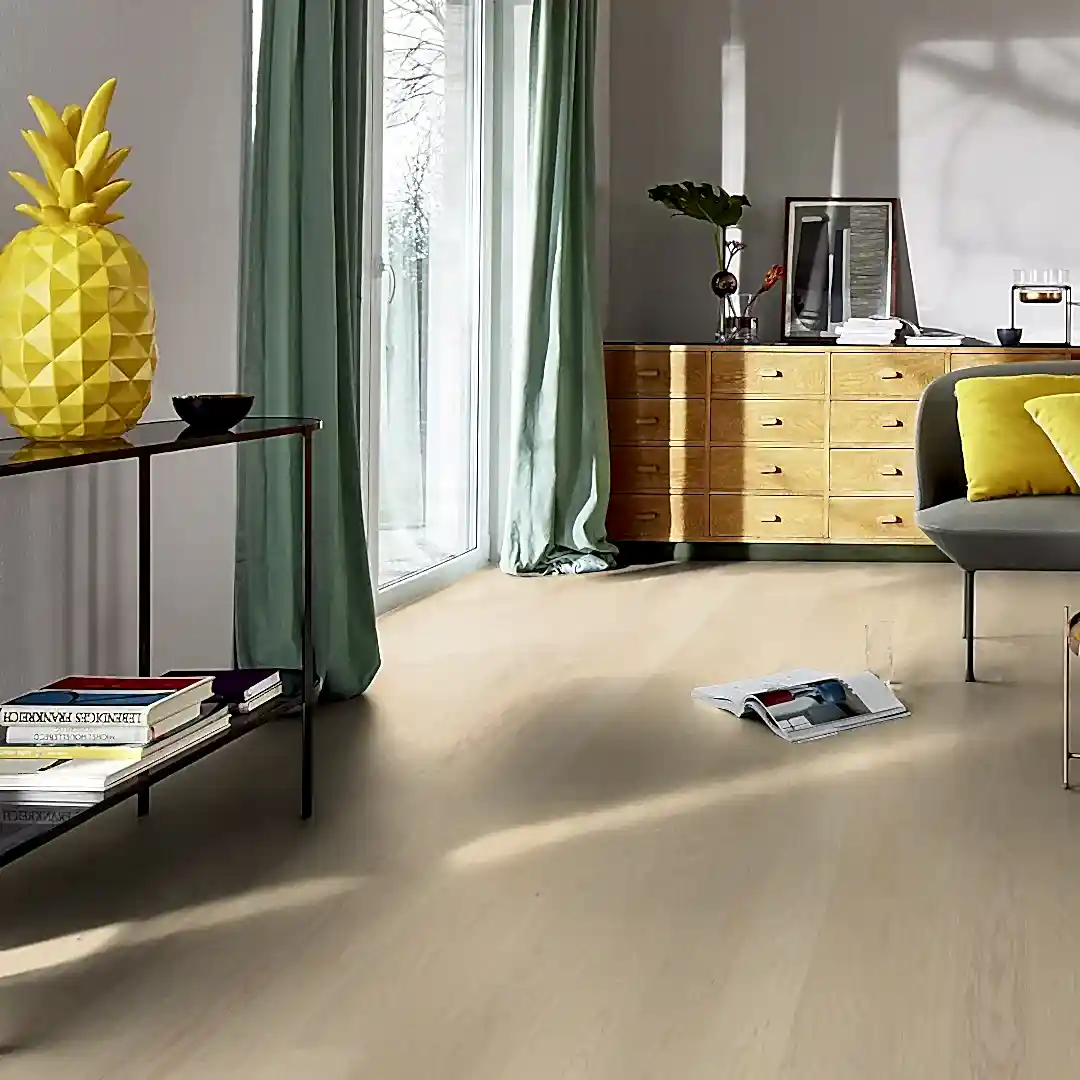
Author, Written by: P. Hirani (Wood flooring Expert)
Designing a home cinema is about more than just investing in the latest sound system or the biggest screen. The way sound moves through a space greatly influences the overall experience, and one key element that often gets overlooked is flooring. The right flooring can dramatically improve acoustics, reduce echo, and make every movie or song sound richer and more immersive.
Understanding How Flooring Affects Sound
Sound travels through vibrations, and different flooring materials absorb or reflect those vibrations in unique ways. Hard surfaces like stone or tile tend to reflect sound waves, which can lead to echo and unwanted reverberation. Softer or layered materials, on the other hand, help absorb sound, minimizing reflections and creating a more balanced listening environment.
In a home cinema, you want the sound to feel controlled and natural, without sharp echoes or muffled tones. The flooring you choose plays a vital role in achieving that balance.
Best Flooring Options for Acoustic Performance
1. Carpet Flooring
Carpets are one of the most effective materials for controlling sound in home cinemas. It absorbs airborne noise and footstep sounds, reducing both echo and impact noise. Paired with an underlay, it provides exceptional insulation, helping to create a cocooned atmosphere perfect for film watching. Dark, plush carpets are also ideal aesthetically, as they prevent light reflection from the screen.
2. Cork Flooring
Cork offers a natural sound-dampening quality due to its cellular structure. It absorbs vibrations, making it an eco-friendly and comfortable option. While not as soft as carpet, it still provides substantial acoustic benefits and can be finished with a protective coating for durability.
3. Vinyl Flooring with Acoustic Backing
Luxury vinyl tiles (LVT) and planks have come a long way in both design and performance. Many modern vinyl floors come with built-in acoustic backing that reduces sound transmission between rooms. This makes vinyl an excellent choice for multi-level homes or apartments where sound control is essential.
4. Engineered Wood with Underlay
If you prefer a sleek and sophisticated look, engineered wood paired with an acoustic underlay can be a great compromise. The underlay helps absorb sound and minimize footfall noise while the wood surface provides warmth and visual appeal. Some homeowners even add area rugs over wooden floors to further enhance sound control.
Tips to Maximize Acoustic Comfort
Use an Underlay: Whether under carpet, vinyl, or wood, a quality acoustic underlay adds an extra layer of sound insulation.
Add Soft Furnishings: Rugs, curtains, and upholstered furniture absorb sound, helping to balance acoustics in larger rooms.
Avoid Bare Walls: Acoustic panels, artwork, or even bookshelves can help diffuse sound and prevent echo.
Mind the Gaps: Ensure proper installation to avoid air gaps that let sound travel between floors or walls.
Blending Style and Function
While performance is crucial, flooring also contributes to the aesthetic appeal of your home cinema. Dark, matt finishes tend to work best because they prevent light glare and help keep the focus on the screen. Materials like luxury vinyl or engineered wood can mimic the look of traditional hardwood while offering better sound control and easier maintenance.
Wrapping It All Up
A great home cinema is as much about how it sounds as how it looks. Choosing the right flooring not only enhances comfort and style but also transforms your entertainment experience. By selecting materials that balance sound absorption and reflection, you can achieve that perfect cinematic feel right in the comfort of your home.
About Author:
Peter H. is a flooring product expert who knows all about different types of flooring materials. He shares his knowledge in blogs to help readers make the best choices for their spaces.
